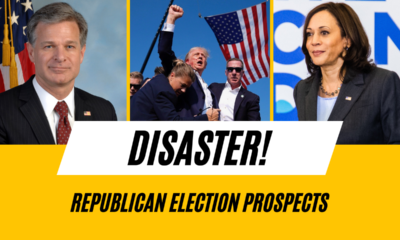Executive
Mandate invalid
In a stunning reversal of fortune, a New York trial court has ruled that New York City’s vaccine mandate for city workers is invalid.
Two days ago (October 24), a New York State judge reinstated – with back pay – some 1400 New York City workers who had lost their jobs for not complying with a vaccine mandate. This decision strikes at the heart of such mandates everywhere in the United States. The judge decided, in essence, that no authority could punish someone for failing to protect himself. While this decision grants the basic premise of coronavirus and vaccination, it holds that those who proposed the mandate, failed to show that non-compliance made a person dangerous to anyone except himself or a similarly non-compliant person. That has always been the scientific premise of artificial active acquired immunity. A mandate for immunization contradicts that premise – and a judge has shown this contradiction to be a mandate’s greatest weakness.
Details of the court order striking down the mandate
Reportage on the decision comes from Just the News, The Daily Caller, and Todd Starnes’ site. The order came from Judge Ralph J. Porzio of the New York State Supreme Court, in Richmond County, New York. (More on terminology for the New York State Unified Court System below.) One can read the decision here.
Judge Porzio ruled, in the case of Garvey v. New York City, on two issues. First was a petition by George Garvey and 15 other persons for reinstatement to their city jobs. Second was a motion by the city to dismiss the petition.
The city held that the petitioners had waited too long to file their petition. The judge said that, to the contrary, the city had never made a final determination in their cases. True, the city terminated these sixteen employees eight months ago. But four months ago the city said, in effect, “Comply with our mandate and you can have your jobs back.” Therefore they had not made a final determination of their status, and the petition was “timely.”
Next, the judge said the mandate was arbitrary and capricious. The key: the city rescinded a vaccine mandate for private sector employees of businesses inside the city. And never once did anyone show or even allege that an unvaccinated person posed a risk to anyone but himself. Nor did the city place any unvaccinated personnel on leave. Thus, the judge held, the mandate “was about compliance,” not public safety or health.
A primer on New York’s courts
The New York State Unified Court System uses many terms far differently than do most State judiciaries. What New York State calls its Supreme Court, other States might call Superior Court. New York State calls its highest court, equivalent to the Supreme Courts of most other States, the Court of Appeals. The second-highest court is the Appellate Division of the Supreme Court.
Go on! Tell them that the New York State Supreme Court says that there’s no Santy Claus! Go on!Actor William Frawley, as Charlie Halloran, in Miracle on 34th Street (1947)
Mr. Garvey and his fifteen co-petitioners filed their petition in Supreme Court. The City has already said they would appeal. Presumably that appeal will go to the Appellate Division. Given the tension between the two sides, it almost certainly will reach the Court of Appeals.
Oddly enough, this might not be the strangest State court system in terms of what the State calls its courts. Massachusetts calls its legislature the General Court, and it calls “courts” in the usual meaning, Judicial Courts.
All elements of the decision against the mandate
The Court held that the immunization mandate:
- Violated separation of powers,
- Denied to petitioners the equal protection of the laws under the New York State Constitution,
- Deprived them of their rights under substantive and procedural due process of law, again under the New York Constitution.
In addition, the Health Commissioner exceeded his lawful authority and acted in an arbitrary and capricious manner. Furthermore, all sixteen are back on the payroll as of 6:00 a.m. October 25, and should receive back pay and salary from the day they lost their jobs.
Public reaction
Twitter user Marina Medvin posted the decision, as above. She then added her own reaction, calling the mandate, and the terminations, a costly mistake on the City’s part.
Another user recalled when some (by no means most) people cheered when they heard of another unvaccinated person dying.
Still another user pointed out that certain persons unknown, predicted that all those sixteen people would die during the winter. Obviously this did not happen.
The rest of the “conversation” after the posting of the order contained:
- Questions of what this decision meant for private-sector employees. Recall that the City canceled its own private-sector immunization mandate. This decision does not directly reinstate any private employee – but it sets a precedent.
- Calls to reinstate active-duty military service members who have suffered discharges, most of them less than honorable, over similar mandates.
- A reminder that Pfizer stands accused of lying about whether the vaccine prevents transmission. Apparently no one can show that.
- Calls for an end to any vaccine mandate for school children.
- Calls to stop, reverse, and prevent such mandates by voting for local, State and federal candidates standing against them.
Conclusion
The Court did say this was not a judgment on the effectiveness of immunization, but on how the City treats its workers. But to read the order is to recognize that the Court accepted one premise that, ironically, any mandate contradicts. The premise is that immunization protects against infection, death from infection, or both. Other contributors to these pages have cast doubt on this premise. But what was at issue here is whether termination merely for not accepting immunization is appropriate.
If any particular drug or device confers protection to the person using it, how does not using it endanger anyone except the non-user? Tellingly, the City never alleged that immunization prevented transmission. So the city could not alleged that these workers posed a risk of transmission to anyone else.
That leaves only the premise of “herd immunity,” the notion that, once a certain proportion of the population is immune, the disease can’t reach the remaining non-immune because the agent will die first. Laying aside the name, the premise depends on a shaky chain of logic anyway. But more than that, an immunization mandate would almost assume that herd immunity does not exist.
In short, the mandate failed because it is logically inconsistent and indefensible. Furthermore, if the City wins at the New York State Court of Appeals, the petitioners might have a federal case on the basis of equal protection of the laws.
Terry A. Hurlbut has been a student of politics, philosophy, and science for more than 35 years. He is a graduate of Yale College and has served as a physician-level laboratory administrator in a 250-bed community hospital. He also is a serious student of the Bible, is conversant in its two primary original languages, and has followed the creation-science movement closely since 1993.
-
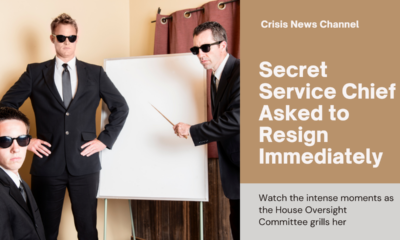
 Executive4 days ago
Executive4 days agoSecret Service chief gets no solace
-
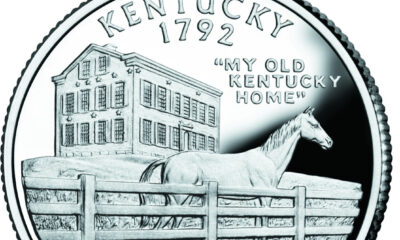
 Executive3 days ago
Executive3 days agoWaste of the Day: Louisville Taxpayers Pay Nearly $600,000 For Empty Building’s Maintenance, Security
-

 Guest Columns4 days ago
Guest Columns4 days agoFear Itself: Democrats’ Favorite Strategy Caused Their Current Chaos
-
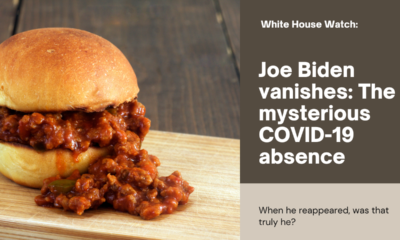
 Executive3 days ago
Executive3 days agoWhere is Joe Biden – or Jill?
-

 Executive1 day ago
Executive1 day agoWaste of the Day: Throwback Thursday: Cities Used Crime Prevention Funds on Soccer Games, Paper Shredding
-
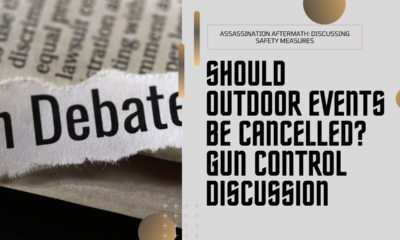
 Executive2 days ago
Executive2 days agoFacile and politically motivated suggestions
-

 Civilization4 days ago
Civilization4 days agoBuild Iron Dome in the United States To Prepare for Israel’s Worst Day
-

 Executive4 days ago
Executive4 days agoThe Emerging GOP Plan To Beat Kamala Harris



